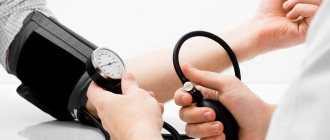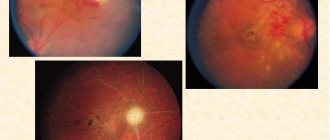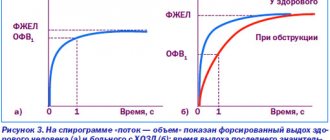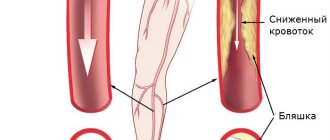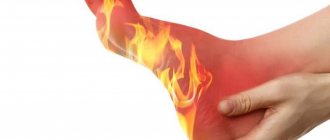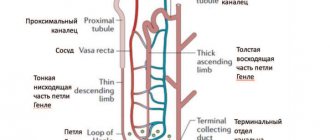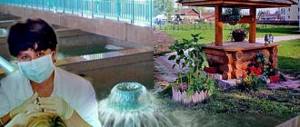Internal illnesses
(therapy, internal medicine) is a field of medicine dealing with the problems of etiology, pathogenesis and clinical manifestations of diseases of internal organs, their diagnosis, non-surgical treatment, prevention and rehabilitation [1][2][3].
The scope of therapy includes diseases of the respiratory system (pulmonology), cardiovascular system (cardiology), gastrointestinal tract (gastroenterology), urinary system (nephrology), connective tissue (rheumatology), etc. Doctors involved in the non-surgical treatment of internal diseases are called therapists
(internists).
Therapeutic tactics
Effective treatment requires correct diagnosis, based on a systematic examination of the patient, analysis of history, complaints and objective signs of the disease (detected during physical examination - examination, palpation, percussion, auscultation, as well as using routine laboratory and instrumental methods). The therapist combines the identified signs (symptoms) of the disease into syndromes (a set of symptoms that have a common pathogenesis), on the basis of which he makes a conclusion about the suspected disease. If it is impossible to make an unambiguous conclusion about the existing disease, differential diagnosis of several similar diseases is carried out with additional laboratory and instrumental studies. In some clinical cases that are difficult to diagnose, a trial treatment is prescribed, which allows the so-called lat. diagnosis ex juvantibus (diagnosis based on evaluation of the results of treatment). After diagnosis, the therapist prescribes treatment. Non-medicinal treatment methods are used (compliance with work and daily routine, nutrition), medicinal and physiotherapeutic treatment, and sanatorium-resort treatment.
Diagnostic methods and treatment
Effective treatment of a particular disease requires correct diagnosis and highly qualified doctors. The ADANAYA clinic uses modern medical equipment, which allows you to obtain the results of tests and studies in the shortest possible time.
At the appointment, the therapist collects anamnesis and receives all the necessary information to determine the patient’s disease, studies complaints, medical history, and hereditary factors. Primary diagnosis consists of the following procedures:
- measuring body temperature;
- measuring blood pressure and pulse;
- palpation to identify painful areas of the body;
- listening to the lungs.
If the need arises, the therapist prescribes special research methods: ECG, X-ray, computed tomography, ultrasound diagnostics, bronchoscopy, echocardiography, blood tests, urine tests and other methods.
The patient can also be referred to a specialist if there is a need to give a more accurate assessment of the condition of a particular human organ.
High competence of the therapist is the most important component in the treatment of a particular therapeutic disease.
Early diagnosis makes it possible to identify inflammatory forms of diseases, risk factors and provide timely medical assistance. This also applies to emergency cases when there is acute pain, inflammation, poisoning and other dangerous conditions.
Sections of therapy and its integrative function
In modern medical science, there is a tendency to increase the level of specialization and fragmentation of clinical medicine into highly specialized (usually organ-based) sections [1]. The sections of internal diseases are:
- gastroenterology - diseases of the gastrointestinal tract
- pulmonology - lung diseases
- hepatology - liver diseases
- nephrology - kidney diseases
- cardiology - diseases of the cardiovascular system
- hematology - diseases of the blood and blood-forming organs
- rheumatology - connective tissue diseases
- infectious diseases - diseases caused by pathogens
- endocrinology - diseases of the endocrine system
- geriatrics - therapy for elderly patients
- sports medicine - pathological changes that occur during sports activities
In parallel with the differentiation of scientific knowledge in internal medicine, the role of this branch of medicine in the integration of scientific research with general therapeutic training of a doctor is increasing. The parallelism of the processes of differentiation and integration of scientific knowledge contributes to the formation of close ties with a number of natural and technical sciences (biology, physiology, physics, chemistry, etc.), which allows the introduction into clinical practice of the latest high-tech methods of examining patients (endoscopy, monitor observation, computer , positron emission and magnetic resonance imaging, etc.).[1]
Causes and symptoms
A timely visit to the clinic allows you to identify health problems and prevent their development, stop acute dangerous processes and receive recommendations for the prevention of existing diseases.
There are many causes and symptoms of therapeutic diseases. This:
- a sharp deterioration in health and constant weakness;
- feeling of heaviness in the body;
- discomfort and pain in any part of the body;
- nausea;
- surges in blood pressure, rapid pulse, interruptions in the functioning of the heart muscle;
- increased or decreased body temperature;
- dry mouth and unpleasant odor;
- lack of appetite or increased appetite;
- constant feeling of thirst;
- swelling of the body;
- dizziness and loss of consciousness;
- dyspnea;
- insomnia;
- pale skin.
Each of the above symptoms is a signal that you need to go to the clinic and see a general practitioner.
Cytostatic disease
Signs
The first manifestation of cytostatic disease is a change in the blood picture.
The number of platelets and granulocytes in the blood is reduced. And this, in turn, leads to septicemia (blood poisoning), which is manifested by high fever, profuse sweat, and symptoms of general intoxication. Later, swelling of the oral mucosa appears, then whitish spots appear on the mucous membrane, and later ulcerative stomatitis develops. Nasal and gastrointestinal bleeding begins. A characteristic sign of cytostatic disease is hair loss.
One of the common manifestations of cytostatic disease is necrotizing enteropathy. It manifests itself as gurgling, rumbling, and bloating. The stomach hurts on palpation. Unfortunately, this symptom often causes the death of the patient. A few days before death, necrotic enteropathy causes abdominal pain, diarrhea or constipation, and dry tongue. These are symptoms of peritonitis, and immediate surgical intervention is necessary to save the patient.
In some cases, parenchymal hepatitis develops. It is manifested by jaundice and enlarged liver with relatively normal health.
Description
There are several reasons for the development of cytostatic disease. The first is taking cytotoxic drugs. They are usually taken to treat cancer or suppress the immune system. This group also includes drugs that are prescribed for the treatment of other pathologies, but also have a cytostatic effect (aminophenazone, aminosalicylic acid). The second reason is ionizing radiation.
Both drugs and radiation primarily affect blood cells. As a result, hematopoiesis is disrupted and bone marrow aplasia develops (destruction of hematopoietic elements).
The severity of the symptoms of cytostatic disease depends on various factors. But the decisive factors are the dose of the drug or radiation used, the method of administration of the drug, and the sensitivity of different organs and tissues to them. The severity of symptoms also depends on the type of cytostatic. Thus, cyclophosphamide strongly suppresses the immune system, affects the intestines and liver, causes rapid agranulocytosis, and thrombocytopenia is insignificant. But busulfan has practically no effect on the immune system and intestines, but agranulocytosis and thrombocytopenia while taking it can be very deep and long-lasting.
An additional risk factor for the development of cytostatic disease is the patient’s initial condition. For example, if a patient has chronic renal failure, then the cytostatic is removed from the body more slowly and, accordingly, is more harmful to hematopoiesis.
Depending on the severity of the manifestation, cytostatic disease is classified into mild, moderate and severe.
Cytostatic disease is often complicated by infection. This could be pneumonia, sore throat, or an abscess at the injection site.
Diagnostics
To diagnose a cytostatic disease, a blood picture and external manifestations of the disease are sufficient.
Treatment
For treatment, patients must be isolated in a hospital, since they need aseptic conditions that cannot be created at home. This will prevent infection and possible complications. All necessary drugs are administered intravenously.
If the infection has already entered the body, antibacterial therapy is prescribed taking into account the pathogen.
The next stage is eliminating the cause of the disease, that is, stopping the drug that caused the disease.
In case of necrotic changes in the mucous membranes, cavities are sanitized. The diet should be gentle, in some cases they even switch to parenteral nutrition so as not to injure the gastrointestinal mucosa.
For the prevention, as well as for the treatment of necrotizing enteropathy, enteral sterilization is performed. For this purpose, antibiotics are used that are not absorbed into the gastrointestinal tract and work only in the intestinal lumen.
To treat the main manifestations of cytostatic disease - agranulocytosis and thrombocytopenia - blood components are administered. Moreover, both platelets and granulocytes must be from the same donor.
In some cases, it is necessary to administer glucocorticoid hormones.
Prevention
To prevent cytostatic disease when taking cytostatics or irradiation, it is necessary to constantly monitor blood counts. Tests should be done at least 2-3 times a week, and treatment should vary depending on the results of these tests.
© Dr. Peter
How to treat a virus without drugs. Quick treatment of ARVI at home
As soon as there is slush, dampness, or a chilly wind outside, get ready for seasonal diseases in the form of acute respiratory infections, acute respiratory viral infections, and influenza. What are these diseases and what are their differences?
ARI is an acute respiratory disease caused by viruses, bacteria and other infectious agents.
ARVI is an acute respiratory viral infection, the causative agent of which is viruses and only viruses, such as rhinoviruses, adenoviruses, reoviruses, as well as influenza and parainfluenza viruses.
You should always be prepared for seasonal diseases such as ARVI
- discomfort in the body and aching joints
- stuffy nose
- sore throat and discomfort when swallowing
If you do nothing after these manifestations, then colors will be added to this picture in the form of:
- temperature
- runny nose, first in the form of clear, continuous discharge, turning into viscous thick mucus
- cough
- sore throat
How to cure ARVI?
If your plans did not include at least a week's absence from work and other important places, then the first thing you need to do is stay at home. At home, quickly take the following measures:
- bed rest
- plenty of warm drinks
- cool room temperature
Such measures in the early stages of treating ARVI will stop the onset of more serious symptoms and will help you get back on your feet within a day or two. These rules apply to both adults and children.
To treat ARVI you need plenty of fluids and bed rest.
If the temperature has already risen above 38°C, is it possible to quickly defeat ARVI and return to normal? It is definitely difficult to answer. Your initial state plays a role here: strong immunity, you lead a healthy lifestyle, eat well, are not under stress - in this case it will not be difficult for the body to overcome the infection.
There are times when “well, you really need to not get sick.” If you take Flucold (4 tablets) or any of the antipyretic teas on the first day, and if you have good immunity, then perhaps everything will stop at the initial stage.
If for some reason time was lost and you were unable to take the measures described above, then most likely it will not be possible to cure ARVI in 1 day.
Of course, it’s better not to get sick, and preventive actions are more pleasant and less expensive, but since this has happened, you need to take measures to quickly cure ARVI at home.
Drinks for colds
When you take them, remember two simple rules:
- Drinking should be plentiful, in small portions, but on the first day a lot, this will promote sweating, which means toxins will be eliminated with sweat
- The liquid should not be hot, not cold, but warm, why? Because in order for its rapid absorption to occur, the temperature of the liquid must be the same as the temperature in the intestines. If the drink is hot, then the absorption process will occur only after the liquid has cooled, and if it is cold, then you will need to wait for it to warm up
The body will spend its energy and strength on the regulation process, and not on fighting the infection. In addition, this will waste time, which will not contribute to the rapid treatment of ARVI.
Beverages:
- If a viral infection occurs in a small child under one year old, then the best option for the baby would be “raisin water.” It’s easy to prepare: pour a spoonful of washed raisins into a glass of boiling water, cover, leave for 30 minutes and let drink by pouring into a bottle
- For older children, regular dried fruit compote is suitable.
- For adults, offer herbal tea with lemon and a spoonful of honey.
- Chamomile tea will work as a mild anti-inflammatory agent
- Ginger tea, rose hip decoction and echinacea tea will help strengthen the immune system
- You can add spices (black pepper, cinnamon, cloves, turmeric) to tea with raspberries, linden, mint to enhance the diaphoretic effect
- And of course, cranberry juice is a storehouse of vitamins and microelements
Ginger tea strengthens the immune system
It is better if the drinks are without additional sugar, warm and freshly prepared. If the child is naughty and does not drink the drink you offer, offer another, eventually water. Let him drink whatever he wants. It's better than not drinking at all.
Cough with ARVI
Viral infection enters the human body in different ways. One of them is the respiratory tract. Penetrating into them, the virus causes a cough, in fact, this is one of the main symptoms of the disease. Once on the mucous membrane, viruses destroy epithelial cells and actively reproduce their own kind. As they descend lower along the trachea and bronchi, they irritate the receptors that are located there. The cough reflex is triggered, which helps the body during illness, as it allows you to remove accumulated phlegm.
How to cure coughs and colds yourself using folk remedies
Of course, the doctor prescribes medications, and an experienced doctor will definitely prescribe you folk remedies to help you quickly recover from ARVI. When treating a cough, what is the goal? It is necessary to remove phlegm and clear the airways. To do this, you need to turn a dry cough into a wet one. You can choose one of the options, if the doctor does not prescribe something specific:
- Breastfeeding helps a lot. There are 4 types of them and each of them helps to quickly recover from a cough, and therefore from a viral infection in general. They have antispasmodic, anti-inflammatory and expectorant effects. Your doctor will prescribe which one is right for you. The composition and instructions for preparation are usually indicated on the pharmaceutical packaging.
- Cocoa butter is very helpful in treating coughs. Both kids and adults will like it because it has a pleasant taste and smell. The oil very well softens an inflamed, cough-ragged throat and facilitates the removal of mucus, leaving a thin fatty film in the respiratory tract. Has healing, regenerating properties. If the cough is dry, you can suck on small, pea-sized pieces of oil up to 6 times a day. You can add it to warm milk or tea, wait until it dissolves, and drink it.
- This recipe is also known from grandmothers: the cap of a black radish is cut off, a small depression is cut out in the radish itself, which is filled with honey, covered with a lid and left overnight. In the morning there will be juice with honey in the recess. You need to take it one tablespoon before meals and in the evening before bed, not forgetting to add honey to the well.
- Ground viburnum promotes easy coughing. Many people don’t like it because of the smell, but you can stir it in warm boiled water and add lemon. If you want to quickly cure ARVI, then you can put up with the smell. Take with caution, as viburnum lowers blood pressure.
- If you mix 3 tablespoons of aloe juice, 100 g of unsalted butter or cocoa butter, 100 g of honey, then you need to take the mixture by adding it a tablespoon to warm milk 2 times a day. Not recommended for pregnant women.
Health as a way of life
Health is a way of life, the quality of our life. It is undermined by stress, negative thinking, bad habits, drug treatment, ecology, etc.
No illness can affect our body if we are in a healthy emotional state, according to American scientists.
Therefore, free your body from negative thoughts, emotions and actions! Switch from your illness to your health! Act as if you are already healthy. The Law of Attraction states that like attracts like. Positive thoughts, faith in recovery and in our body's natural ability to heal itself will support your immune system and help it cope with the disease.
The regeneration process works autonomously, regardless of our actions. On the contrary, we ourselves create barriers to our recovery. How?
When we get sick, that is, when we feel the symptoms of an illness, we take chemicals that are included in almost all medications. They cannot give us health; medicines can only bring the patient out of a critical condition. But their further use is harmful to health.
Medicine, as emphasized above, treats symptoms that are SOS signals for us. These signals require identifying the cause of the disease. The body reminds us with pain of a mistake in our actions or thoughts.
For example, a patient is diagnosed with bronchial asthma and prescribed medications. But the cause of asthma is either that the body does not receive enough water, and the function of the bronchi is automatically limited. Then you just need to replenish your body with clean water. Or, due to prolonged stress in an environment of constant tension, a person literally “cannot breathe freely,” and on the physical level this is manifested by bronchospasm. Here you need to identify annoying circumstances and eliminate them.
And doctors prescribe vasodilators, which temporarily relieve attacks, but at the same time poison the body.
We must remember that our body has natural wisdom. Listen to him, and don’t fight him with pills, especially without a doctor’s prescription.
Medicine won't cure us
When we get sick, we hope that doctors will cure us. But this is impossible for several reasons. Because:
- it is necessary to treat the cause of the disease, and not its symptoms, as our traditional medicine does;
- free treatment, often formally: this is how it is accepted, this is how doctors were taught;
- paid medical services pursue the main goal - to get more money from the patient, and not to make him healthy;
- the entire healthcare system is aimed at making money, and not at preventing diseases and improving the health of the population;
- Diagnosis of diseases costs so much money that most of the population cannot afford an annual preventive examination. Paid medical examinations, which workers of large enterprises undergo at the expense of the employer, only establish the fact of health deviations from the norm. And in order to make an accurate diagnosis and treat the disease, money is again needed.
What's the conclusion? Health is only in our hands! We need to remember our body’s natural ability to heal itself.
However, most people do not believe in self-healing. Those who are ill usually give up, immerse themselves in the illness with all their consciousness, spend a lot of money on expensive medicines, feel like a weak victim, discuss their illness with friends and strangers, thereby exacerbating it.

